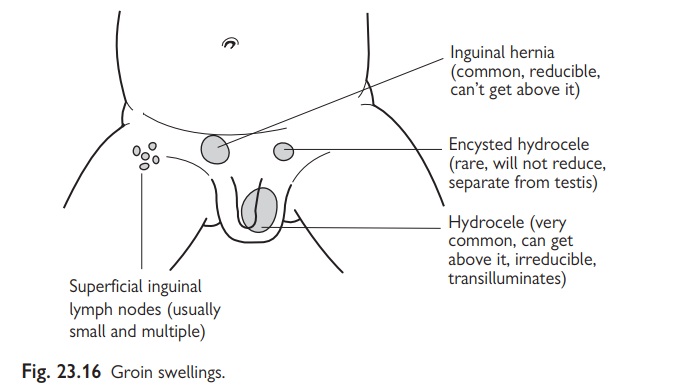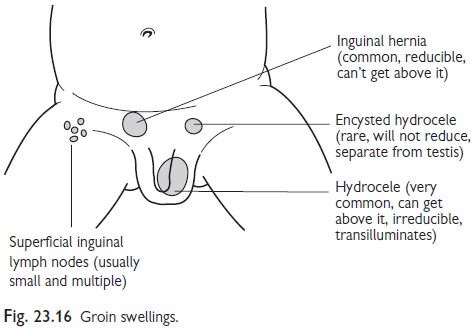Chapter: Paediatrics: Paediatric Surgery
Paediatrics: Inguinal hernias

Inguinal hernias
Groin hernias in children are almost
invariably indirect inguinal hernias. Femoral hernias are rare in children.
Inguinal hernias have the following characteristics.
•
More
common in boys.
•
More
common on the right side, due to later descent of right testis.
•
15%
hernias are bilateral.
•
Symptoms
are rare.
Clinical care
•
A
reducible swelling in the groin, often extending into the scrotum (Fig. 23.16).
•
Surgical
herniotomy. Infants should be repaired within a few weeks of diagnosis because
the risk of incarceration is high. The risk of incarceration lessens after the
age of 1yr.

Incarcerated hernia
•
Incarceration
results in an intestinal obstruction.
•
There
is a 30% risk of testicular infarction due to pressure on the gonadal vessels.
•
Treatment
of an irreducible inguinal hernia comprises resuscitation of the child and then
reduction of the hernia by taxis (i.e. gentle, but sustained pressure is
applied to the sac to reduce the contents).
•
Most
hernias can be reduced safely, although it may be necessary to give the baby
morphine first. If the hernia cannot be reduced, emergency surgical exploration
is necessary (but this is rare). The use of gallows traction to reduce a hernia
is obsolete.
•
Provided
the hernia is reduced a herniotomy should be performed after 24–48hr to allow
for any oedema to settle.
Related Topics